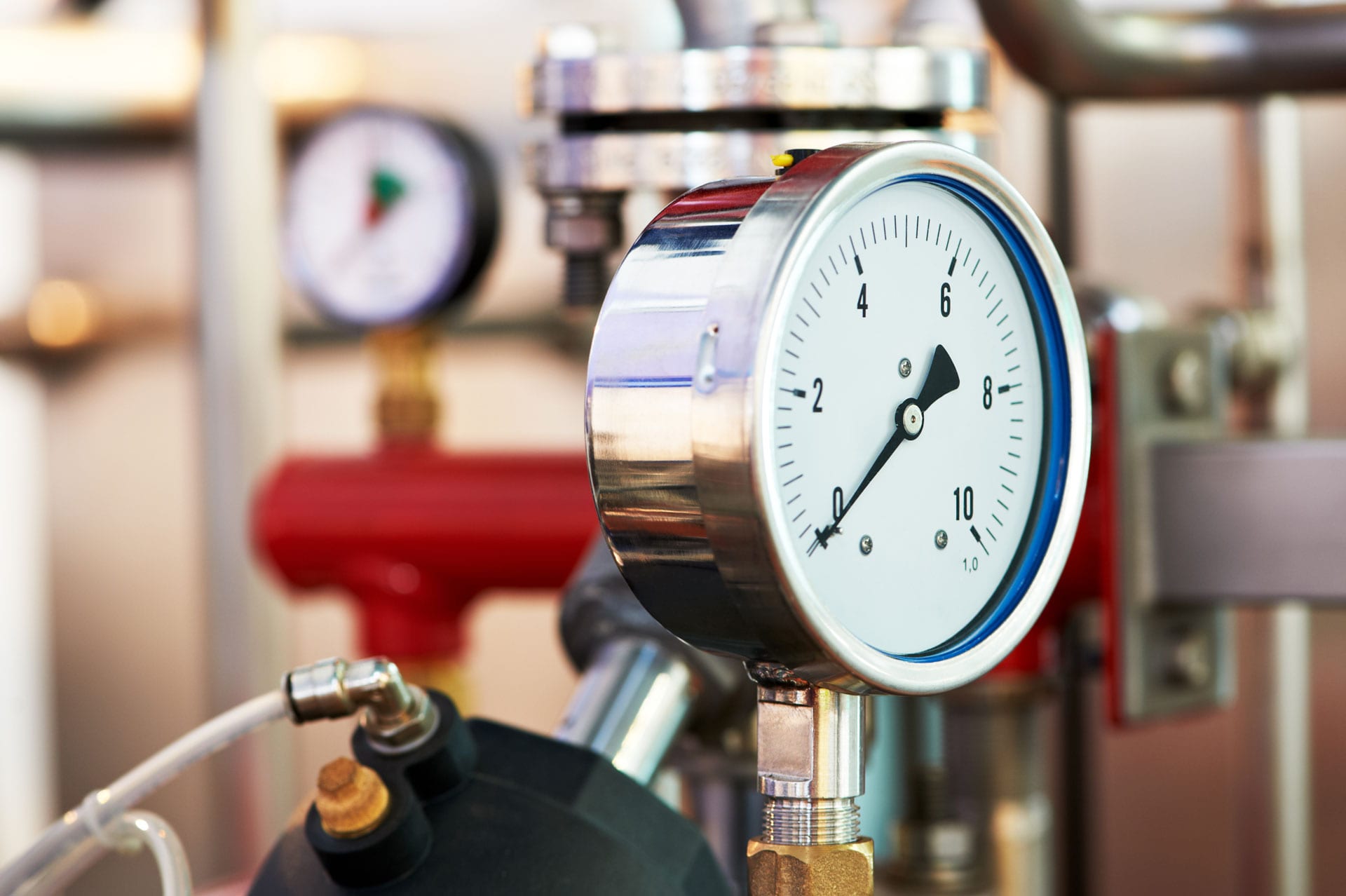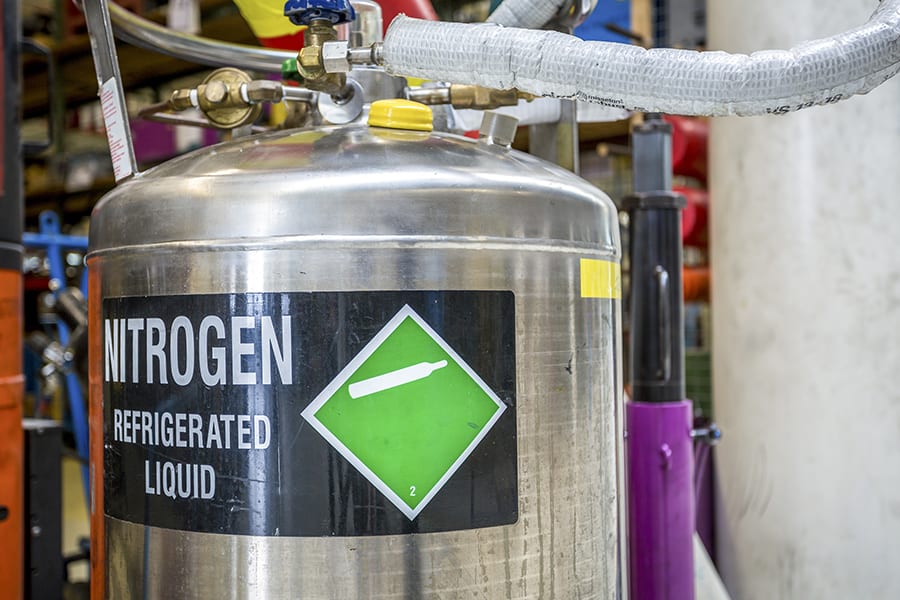Gas piping is required to be purged when repaired, extended, or newly installed. Purging is a complicated process, and rules and best practices are commonly misinterpreted, which has resulted in many injuries and casualties, explosions, and monetary loss. Common misconceptions must be cleared up, and risks made apparent to ensure safety for all workforces.
Risk #1: Purge Points
Purge points are implemented into piping systems by installing pipe nipples at strategic locations to add or extract nitrogen and natural gas at different stages of the process. The designated fitting is typically a 1” schedule 80 nipple with natural-gas-rated ball valves on the ends. When selecting the locations of purge points, it is essential to verify that the areas are not prone to damage from vehicle traffic, such as a tow motor or scissors lift.
Risk #2: Isolation Points
Verify that fuel trains are secure and not susceptible to damage from excessive pressures during pressure testing. Line blinds can be utilized as a safety device to shut off the product flow in the process pipe. This method isolates a piece of the process pipe and minimizes the possibility for harmful devices such as regulators in the fuel train that are not graded for the heightened test pressures. Valves can remain in the open position or leak in the closed position, meaning line blinds should not be utilized for pressure testing most of the time. However, in some cases, line blinds help pressure testing run smoothly, while in others, pressure testing cannot be performed against a valve.
Risk #3: Piping Support
While completing repairs, sections of piping may be disconnected to add tees or install line blinds. Verify that suitable pipe supports exist, so piping sections don’t collapse when divided. Keep in mind that the closest support may be on the other side of the disconnected joint.
Risk #4: Gaskets
According to the NFPA 54, flange gaskets are not allowed to be reused regardless of the shape they’re in. To establish leak-free joints, new gaskets must be installed as well as adequately rated bolts for the flanges. If you are mating up flanges, remember that it is raised face to raised face and flat face to flat face.
Risk #5: Material Specifications
Only properly rated pipe and fittings can be utilized to avoid more significant issues. Double-check that well-known suppliers are being used and all materials have no defects from manufacturing and installation. These defects can be an assortment of issues such as the improper grade of pipe, and misaligned threads and pinholes in cast-iron fittings.
Risk #6: Nitrogen
Did you know that two full breaths of pure nitrogen can kill you? This inert gas isn’t one you mess around with.
All team members need to understand this threat and mark all nitrogen purge points. The purge points need to be in well-ventilated areas. Check pressure ratings of regulators and hoses throughout the process because large liquid nitrogen tanks can produce high discharge pressures. During the discharge process, the purge points need to be closely monitored. All individuals assisting are required to be trained on the safe handling of nitrogen. There are several purge methods to release nitrogen, but two are most commonly used.
- Trickle Purge: A small amount of nitrogen is allowed to fill the tube during cylinder change, so high levels of nitrogen can’t migrate. A quick cylinder change helps minimize the time that the tubing is open to the outside environment.
- Slug Purge: A large amount of nitrogen is released that has a more abundant flow volume when compared to the size of the pipe.
Plan and make sure you have enough nitrogen available. If you run out of nitrogen during a purge or pressure text, it will be costly in the end. It is difficult to tell how much nitrogen will be needed when chasing leaks. The extent of the system you’re working with will depend on the size of the regulator required, and your supplier can determine this. If the wrong regulator is utilized, lines will take a long time to fill.
Risk #7: Discharge Locations
Purge end points are where natural gas may be released, and it’s essential to verify that these points are outside and at least 25 feet away from any potential ignition sources. Rope off designated areas to keep ignition sources such as vehicles and people away. Never release gas into a building to bleed a line, and make sure there is always a way to get gas out of a building like a garden hose. Double-check that the hose is grounded and all materials have the same electrical potential.
Risk #8: Sampling Devices
A combustion flue gas analyzer should not be used for sampling and monitoring during natural gas introduction and removal. Utilize a recently calibrated Lower Explosive Limit (LEL) meter that is of good quality.
Two calibrated devices must be available as abruptly halting the process due to an instrumentation error can be risky. People near the purge end point can utilize one meter as a barrier protector, and the other meter paired with a 6-foot sensing tube can observe conditions at the actual discharge point. No team members should be near the discharge point. It’s encouraged to execute a timed and measured discharge, and after the flow is stopped, approach to complete an LEL check at the end of the purge hose.
It’s difficult to determine when a situation can become dangerous. Gas utilities inject Mercaptan, a sulfur derivative, into pipes. This liquid is absorbed by rust, new steel pipe, and concrete making it very difficult to detect a leak by scent.
 Risk #9: Piping Integrity
Risk #9: Piping Integrity
According to NFPA 54, you are required to have pressure testing documentation for new and repaired piping systems before introducing natural gas. All results should be properly maintained for the life of the piping system. While completing repairs or additions, the piping may not be installed properly or disturbed.
All sections of piping that have had recent additions or repairs must be evaluated. Pressure chart recorders can be utilized as they provide outstanding records of pressure and hold times of tests. The codes available will help you determine any sudden changes or issues so they can be resolved immediately.
Risk #10: Emergency Isolation
When natural gas is reintroduced after the post-repair purge, the natural gas source valve must be continuously monitored. All involved individuals should maintain clear, continuous communication. This allows for any problems to be detected instantly, resulting in the immediate isolation of the natural gas supply. Along with constant monitoring, there are a few more processes that should be checked.
- Service of Valves
- Handle Installation
- Verification of Valve Function
All potential risks should be considered and addressed at any time natural gas piping systems are designed or worked on. While the process is extensive and lacking simplicity, it can be safely completed if adequately planned and executed.






